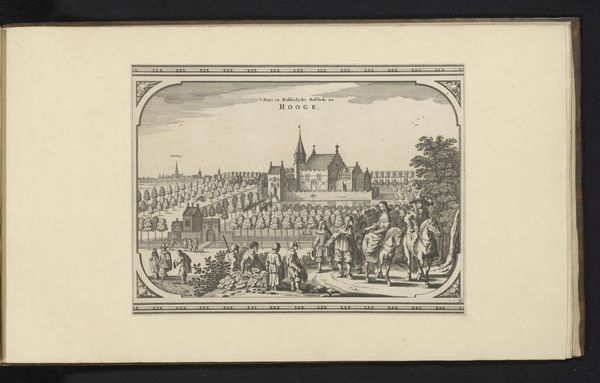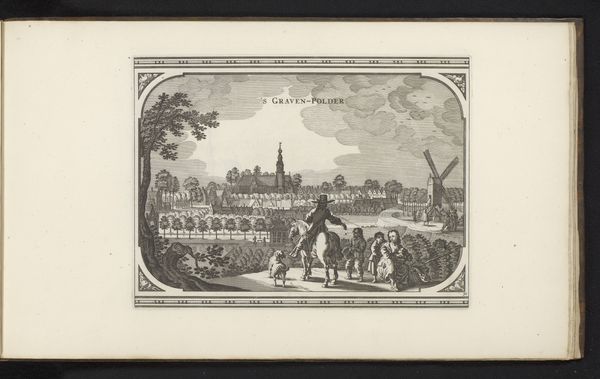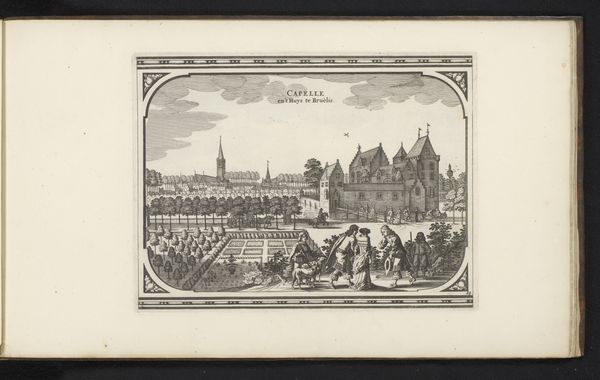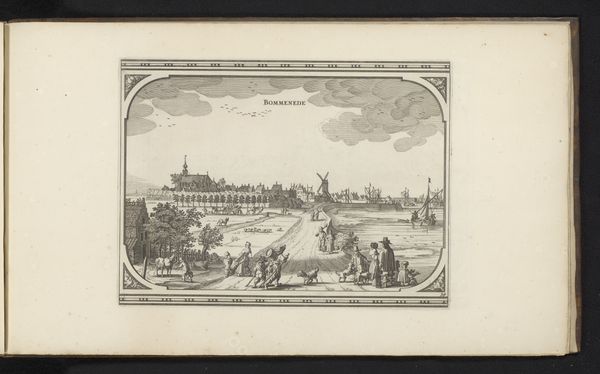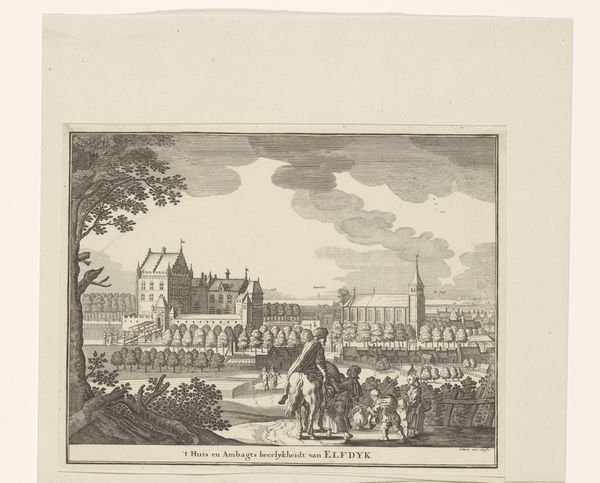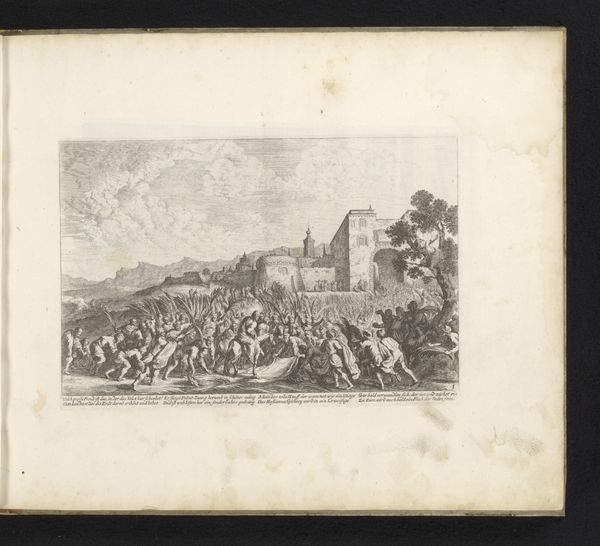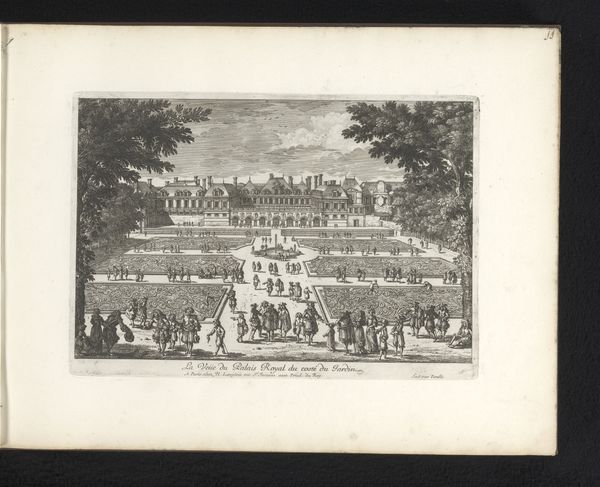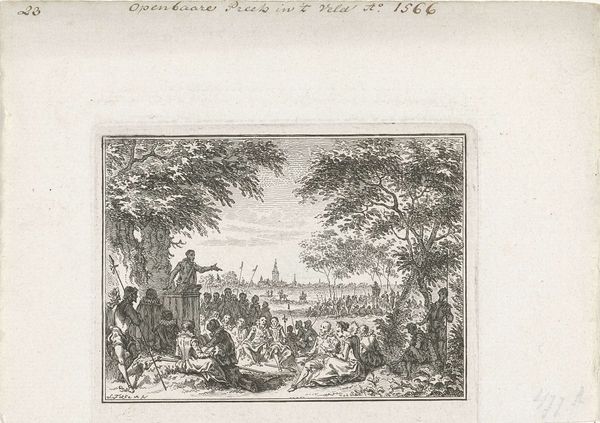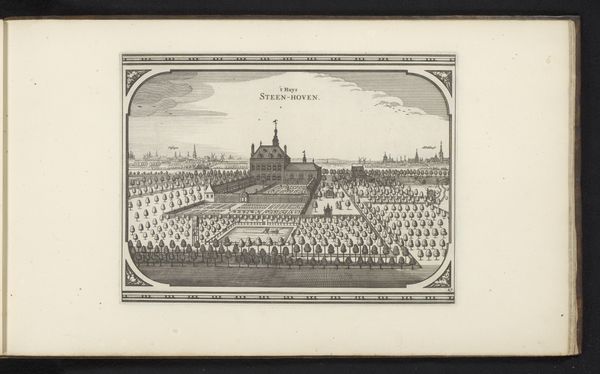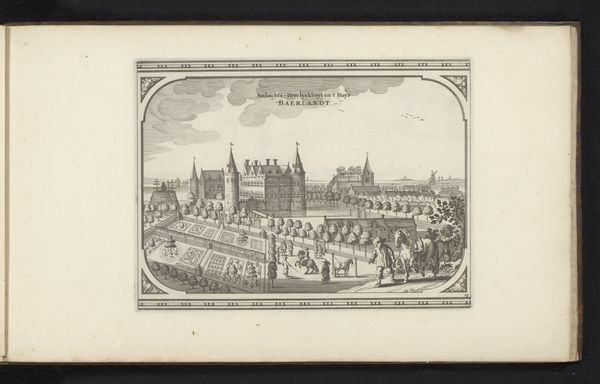
drawing, print, ink, engraving
#
drawing
#
pen drawing
# print
#
landscape
#
ink
#
genre-painting
#
engraving
Dimensions: height 210 mm, width 280 mm
Copyright: Rijks Museum: Open Domain
Curator: What a fascinating glimpse into 17th-century life. We are looking at “Gezicht op Huis Cranesteyn,” or “View of Cranesteyn House,” an engraving by Pieter Hendricksz. Schut, dating back to about 1662. It resides here at the Rijksmuseum. Editor: It feels so precise, almost clinical. The rigid geometry of the gardens contrasted with the frolicking dogs – there’s an interesting tension at play. It seems…contained, ordered. Curator: That sense of order is key. The Dutch Golden Age was all about asserting control over the land, shaping it to reflect their ambitions. This print acts as both record and aspirational statement of power and wealth. Think about the societal hierarchies at the time, reflected here through ownership and leisure. Editor: Yes, but even the making of this image reveals a social context. Engravings were not produced by some lone genius. They were the product of skilled labor, collaboration, from the ink maker to the printing press operator. And consider the consumption – who purchased this image, and how might it have been displayed and understood within the culture? Curator: Absolutely. Its accessibility broadens its historical significance beyond simple land ownership. Note also the symbolism of the figures, engaged perhaps in some kind of diplomatic exchange or leisurely procession. We might consider gender roles, noting who is mounted on horseback versus who is on foot and serving in what capacity. What sort of identities are represented? Editor: The detail afforded by engraving certainly invites a closer look into the specifics. But for me, I’m always drawn to the tangible, the means by which images like these were circulated, and the social networks which produced them. It's not simply about representing the House of Cranesteyn, but about its presence as a physical artifact. Curator: Indeed. It becomes an intersection of social, political, and economic currents of its time. Looking through that lens definitely opens our eyes to layers beneath the surface. Editor: Seeing the work through the physical means that led to it opens me to that history too.
Comments
No comments
Be the first to comment and join the conversation on the ultimate creative platform.
